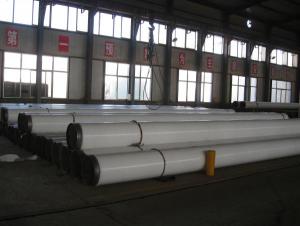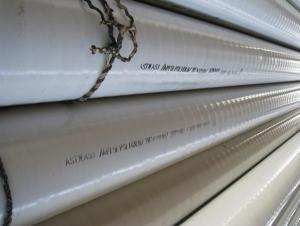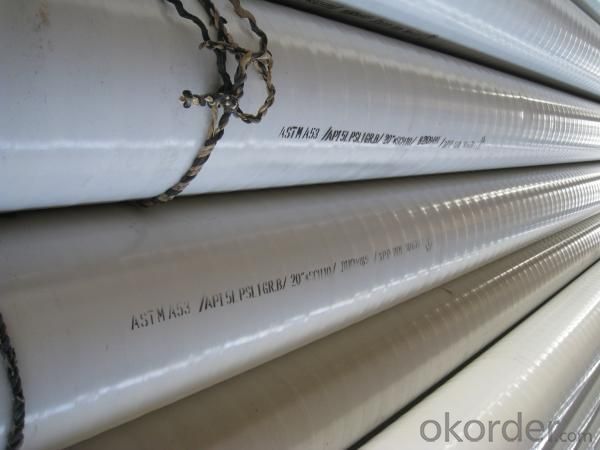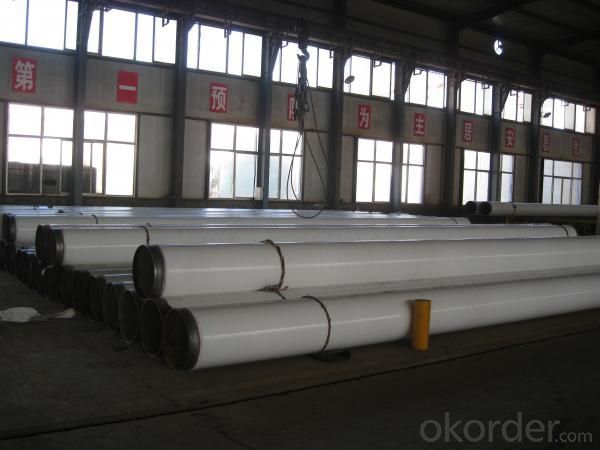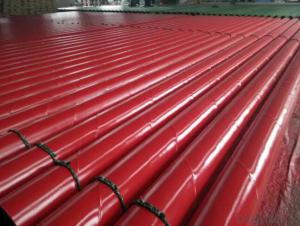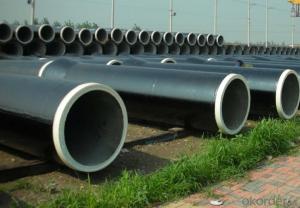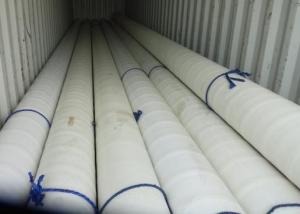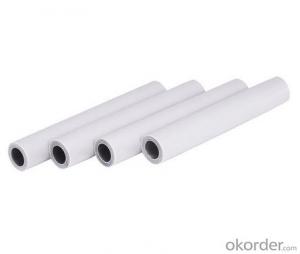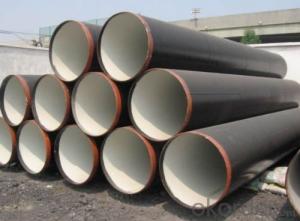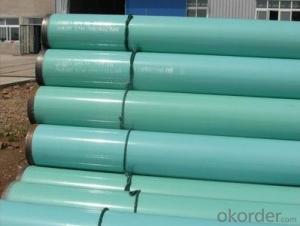PP Lined Steel Pipe/2PP 3PP Coating or Lined Steel Pipe
- Loading Port:
- Tianjin Port
- Payment Terms:
- TT or LC
- Min Order Qty:
- 50MT m.t.
- Supply Capability:
- 5000 Tons Per Month m.t./month
OKorder Service Pledge
OKorder Financial Service
You Might Also Like
High quality PP Lined Steel Pipe/2PP 3PP Coating or Lined Steel Pipe with cheap price.
Specifications:
|
order |
item |
performance |
test method. | |
|
2PE |
3PE | |||
|
1 |
peeling strength (N/cm)20±5℃ 50±5℃ |
≥35 ≥25 |
≥60 ≥40 |
DIN30670 |
|
2 |
cathodic disbanding(mm) (65℃,48h) |
≤15 |
≤10 |
SY/T4013 |
|
3 |
impact strength (J/mm) |
≥8 |
DIN30670 | |
|
4 |
bending resistant (2.5°) |
No cracking of polyethylene |
SY/T4013 | |
|
5 |
Pinhole (25kv) |
No leak |
DIN30670 | |
Packaing:Standard export package, bundled hexagonal shape using steel strip or as per your specific requirement
Delivery:Within 35 days when made down paymnet,by container or bundle.
Applications:For conveying gas,water,petroleum and structural purpose.
Quality Assurance:MTC will be provided , third party inspection acceptable
Picturers for PP Lined Steel Pipe/2PP 3PP Coating or Lined Steel Pipe as belows,
Production Line :Advanced technology with imported equipment,good quality,low price.
.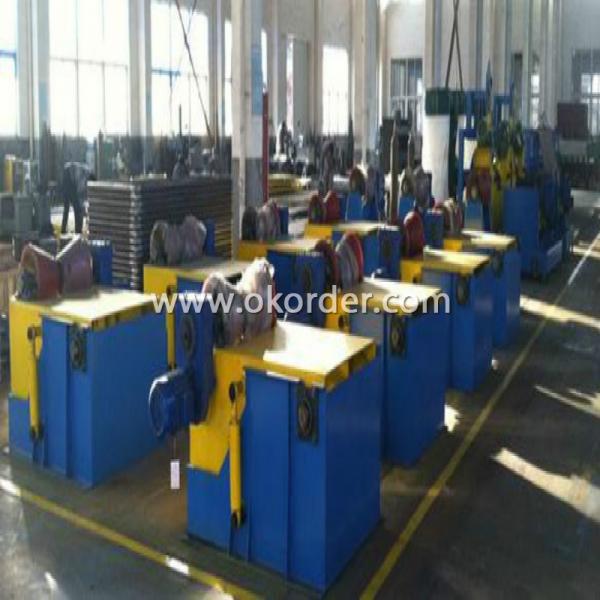
Loading truck,professional loading service with our experienced staff ,no damage,assure good quality.
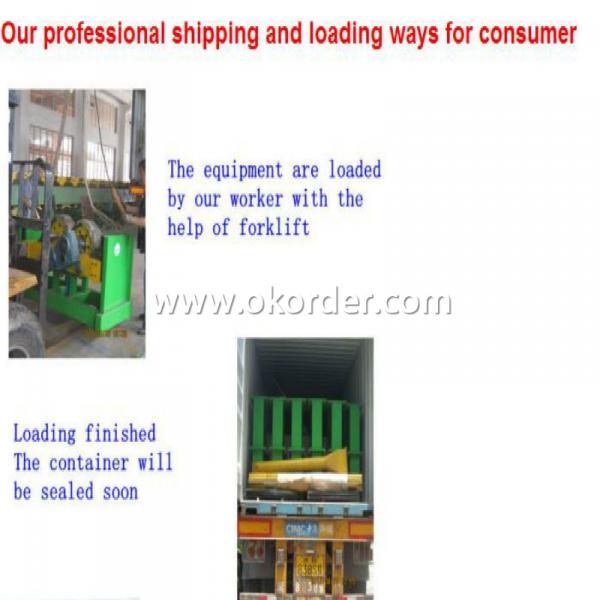
Container Finished Loading,we have long and good business relationship with shipping agent,to low down cost.
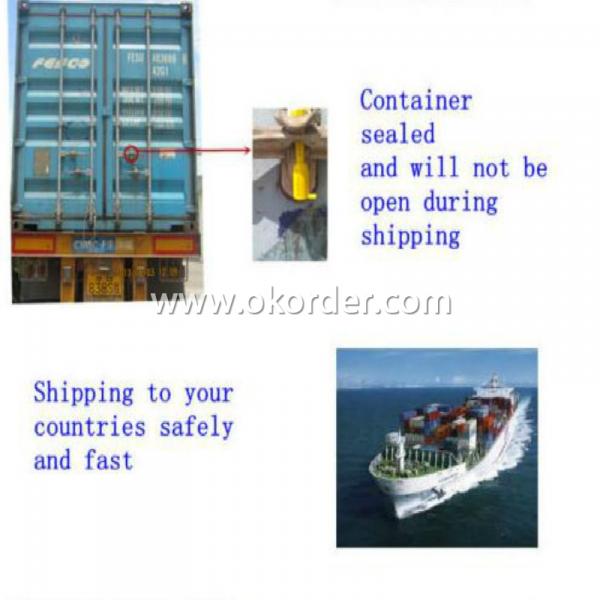
Welcome to order for PP Lined Steel Pipe/2PP 3PP Coating or Lined Steel Pipe.
- Q: ASME seamless tube how to express, what is the form, I did not find on the ASME, thank God!
- Welded and seamless pipe standards are ASME B31.10, no go, if you want to force a seamless tube, the request can be seamless for seamless meaning.In addition to that, the cost and difficulty of manufacturing welded pipe is higher than that of seamless tube.
- Q: Will the steel tube dance?
- The steel tube dance tube has a rotating steel tube and a fixed steel tube, so that different types of steel pipe can be chosen according to the type of pipe dance performed by the dancer.
- Q: What are the common applications of steel pipes in construction?
- Steel pipes are commonly used in construction for various applications such as plumbing, structural support, transportation of fluids and gases, underground drainage systems, and the construction of infrastructure like bridges and buildings.
- Q: What are the different types of steel pipe supports for thermal expansion?
- There are several different types of steel pipe supports that can be used for thermal expansion, including rigid supports, sliding supports, and spring supports. Rigid supports provide fixed support to the pipe and do not allow for any movement. Sliding supports allow the pipe to move horizontally as it expands or contracts, while still providing vertical support. Spring supports use springs to support the weight of the pipe and allow for vertical movement as well as thermal expansion.
- Q: How can galvanized steel tubes be painted on the surface?
- The market is commonly used in alkyd iron red primer, iron red epoxy primer are not suitable for galvanized parts, otherwise it is easy to fall off. It is important to point out that the saponification of the galvanized sheet with alcohol, acid and paint will result in the failure of the coating and the damage of the original zinc coating.
- Q: What are the different types of steel pipe hangers?
- There are several different types of steel pipe hangers that are commonly used in various industries and applications. These hangers are designed to support and secure pipes, ensuring proper alignment and preventing sagging or movement. 1. Clevis Hangers: Clevis hangers consist of a clevis, which is a U-shaped metal bracket, and a threaded rod that connects the clevis to the supporting structure. This type of hanger allows for vertical adjustment and is often used in suspended piping systems. 2. Split Ring Hangers: Split ring hangers are circular metal rings that are split on one side. They can be easily opened and closed around the pipe, providing a secure hold. Split ring hangers are commonly used for suspending horizontal pipes. 3. Beam Clamps: Beam clamps are designed to attach to structural beams or channels, providing a secure mounting point for pipe hangers. They come in various designs, including top flange, bottom flange, and side mount, to accommodate different installation needs. 4. Swivel Hangers: Swivel hangers are used to support pipes that may experience thermal expansion or contraction. These hangers allow the pipe to move horizontally while still providing support and preventing excessive stress on the connections. 5. Riser Clamps: Riser clamps are used to support vertical pipes or risers. They typically consist of a metal band that wraps around the pipe and a threaded rod that connects the band to the supporting structure. 6. Pipe Roller Supports: Pipe roller supports are used in applications where pipes need to move horizontally due to expansion or contraction. These hangers consist of a series of rollers that allow the pipe to move freely while still providing support. 7. Pipe Saddles: Pipe saddles are U-shaped brackets that wrap around the pipe, providing support on both sides. They are often used in applications where pipes need to be secured to walls or other structures. These are just a few examples of the different types of steel pipe hangers available. The specific type of hanger used will depend on factors such as pipe size, weight, location, and required movement allowance. It is important to choose the appropriate hanger for each application to ensure proper support and functionality of the piping system.
- Q: What is the purpose of galvanizing steel pipes?
- The purpose of galvanizing steel pipes is to provide corrosion resistance and extend their lifespan.
- Q: What are the challenges faced in transporting steel pipes?
- Transporting steel pipes can pose several challenges. Firstly, steel pipes are heavy and bulky, making them difficult to handle and load onto transportation vehicles. Specialized equipment, such as cranes or forklifts, is often required to safely lift and maneuver the pipes. Secondly, steel pipes are susceptible to damage during transport. They can be easily scratched, dented, or bent if not properly secured. This necessitates careful packaging and securing techniques to prevent any deformation or damage during transit. Additionally, steel pipes are prone to corrosion, especially when exposed to moisture or harsh weather conditions. Therefore, protecting the pipes from moisture and maintaining proper storage conditions during transportation is crucial to prevent rusting and maintain their quality. Furthermore, the length of steel pipes can also present challenges. Depending on their size, some pipes may be too long to fit on standard transportation vehicles. This requires the use of specialized trailers or the pipes may need to be cut into smaller sections, which can add complexity and cost to the transport process. Lastly, the cost of transporting steel pipes can be high due to their weight and size. Freight charges can be expensive, especially for long-distance transportation. Thus, finding cost-effective transportation solutions while ensuring the safety and integrity of the pipes is a constant challenge in the industry.
- Q: How are steel pipes repaired in case of damage or leaks?
- Steel pipes are repaired in case of damage or leaks by first identifying the affected area. The damaged section is then cut out, and a new piece of steel pipe is welded or bolted in its place. This ensures a secure and watertight connection, restoring the integrity of the pipe and preventing further leaks or structural issues.
- Q: How are steel pipes transported?
- Steel pipes can be transported using various methods depending on their size, weight, and distance to be covered. The most common modes of transportation for steel pipes include trucks, trains, and ships. For short distances, steel pipes are often transported using trucks. They are loaded onto flatbed trailers or in some cases, specialized pipe trailers that are specifically designed to securely hold and transport pipes. These trucks can easily navigate local roads and highways, making them a convenient option for transporting steel pipes to nearby locations or construction sites. When it comes to long-distance transportation, trains are commonly used. Steel pipes are loaded onto flatcars, which are specifically designed to carry heavy loads. This method is preferred when transporting large quantities of steel pipes over long distances, as trains provide a cost-effective and efficient means of transportation. Moreover, trains are capable of transporting pipes of various lengths and diameters, making them a versatile option. For international shipments or transportation over bodies of water, steel pipes are often transported by ships. Steel pipes can be loaded into shipping containers or onto the deck of a cargo ship. Shipping containers provide protection from weather conditions and ensure the pipes remain secure during transit. Additionally, specialized ships equipped with cranes can handle large and heavy pipes, facilitating the transportation of oversized steel pipes. In some cases, pipelines can also be constructed to transport steel pipes directly from the manufacturing facility to the desired location. This method is commonly used for projects involving oil, gas, or water pipelines. The pipes are laid underground, eliminating the need for separate transportation. Overall, the transportation of steel pipes involves a variety of methods, including trucks, trains, ships, and pipelines, depending on the distance, quantity, and specific requirements of the project. Each method has its advantages and is chosen based on factors such as cost, efficiency, and logistics.
1. Manufacturer Overview
| Location | Cangzhou,China |
| Year Established | 2010 |
| Annual Output Value | 200 million square meters |
| Main Markets | Main land;Middle East;Southeast Asia |
| Company Certifications | ISO 9001 |
2. Manufacturer Certificates
| a) Certification Name | |
| Range | |
| Reference | |
| Validity Period |
3. Manufacturer Capability
| a) Trade Capacity | |
| Nearest Port | Tianjin |
| Export Percentage | 41% - 50% |
| No.of Employees in Trade Department | less than 10 |
| Language Spoken: | English;Chinese |
| b) Factory Information | |
| Factory Size: | 20,000 square meters |
| No. of Production Lines | 2 |
| Contract Manufacturing | OEM Service Offered;Design Service Offered |
| Product Price Range | Average |
Send your message to us
PP Lined Steel Pipe/2PP 3PP Coating or Lined Steel Pipe
- Loading Port:
- Tianjin Port
- Payment Terms:
- TT or LC
- Min Order Qty:
- 50MT m.t.
- Supply Capability:
- 5000 Tons Per Month m.t./month
OKorder Service Pledge
OKorder Financial Service
Similar products
Hot products
Hot Searches
Related keywords
